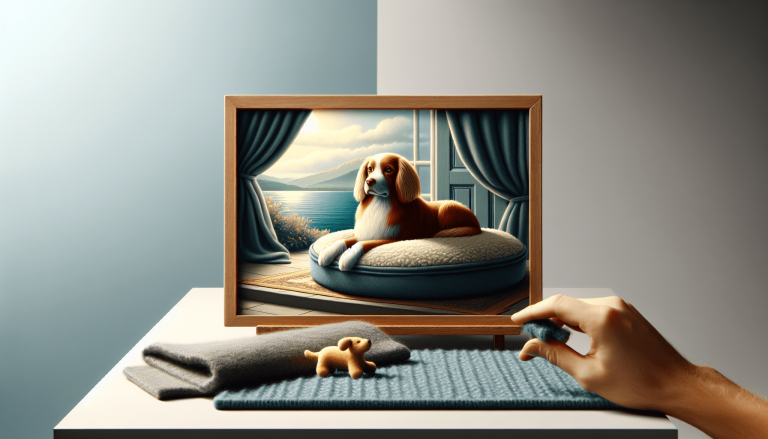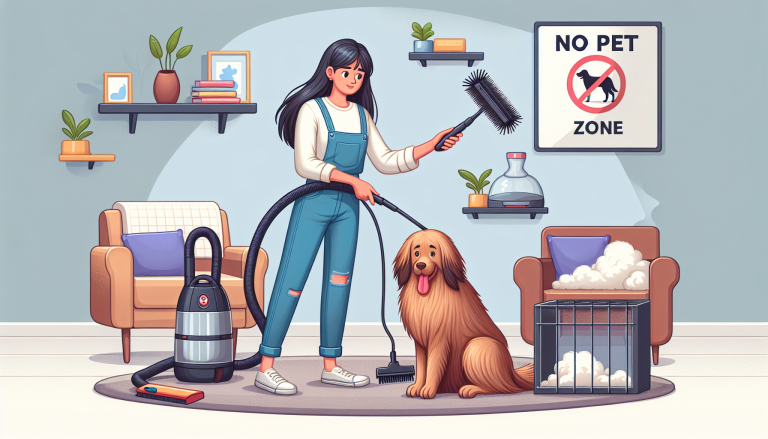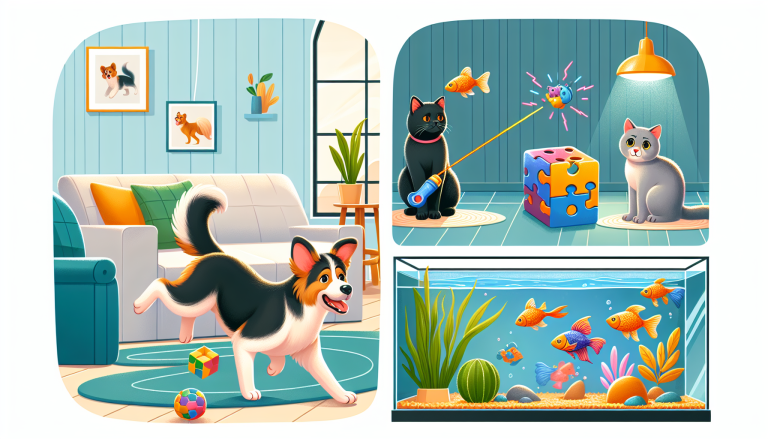Congratulations on welcoming a new addition to your family! Now that you have a furry bundle of joy in your life, you may be wondering how to establish a strong bond with your new pet. Building a strong connection with your pet not only enhances their overall well-being, but also provides you with countless moments of joy and companionship. In this article, we will explore some of the best ways to foster this special bond with your newest family member. So, get ready to embark on a journey of love, laughter, and unforgettable moments with your beloved pet!
Table of Contents
ToggleUnderstanding Your Pet’s Needs
Having a pet is a special experience that brings so much joy and companionship into your life. However, it’s important to remember that your pet has needs too. By understanding and meeting these needs, you can create a strong and loving bond with your furry friend.
Researching Your Pet’s Species and Breed
Before bringing a new pet into your home, it’s crucial to research their species and breed. Each pet has unique characteristics and requirements, so understanding what your pet needs to thrive is essential. From exercise needs to dietary preferences, knowing your pet’s basic requirements will help you provide the best care possible.
Establishing a Routine
Pets thrive on routine, so establishing a daily schedule will help them feel secure and well-adjusted. Set specific times for feeding, exercise, and playtime. This consistency will not only meet their physical needs but also help create a sense of stability and trust.
Creating a Safe and Comfortable Environment
Ensuring that your pet has a safe and comfortable environment is crucial for their overall well-being. Provide a cozy bed, fresh water, and a designated area for their food and litter box. Consider their natural habitat and try to mimic it as closely as possible. For example, if you have a small pet, provide hiding spots and tunnels for them to explore.
Building Trust and Establishing a Connection
Building trust with your pet is essential for a strong and loving bond. Here are some tips to help build that trust and establish a connection.
Be Patient and Give Them Time to Adjust
Remember, your pet is entering a new environment and may need time to adjust. Be patient and understanding during this period, allowing them to explore their new surroundings at their own pace. Avoid overwhelming them with too many new experiences or interactions in the beginning.
Use Positive Reinforcement
Positive reinforcement is a powerful tool when it comes to training and building trust. Reward your pet with treats, praise, and affection when they display desired behaviors. This positive association will help them understand what behavior is expected of them and create a bond based on trust and respect.
Spend Quality Time Together
Spending quality time with your pet is essential for bonding. Whether it’s cuddling on the couch, going for walks, or playing interactive games, these moments help strengthen your connection. Show genuine interest in their well-being and make sure to dedicate time each day to give them undivided attention.
Communication and Body Language
Effective communication is key to understanding your pet’s needs and desires. Learning to read their body language and using verbal and non-verbal cues will enhance your ability to communicate effectively.
Learn to Read Your Pet’s Body Language
Each pet has their own way of expressing themselves through body language. Pay attention to their tail wagging, ear positioning, and eye contact. These subtle cues can give you important insights into their feelings and needs. For example, a wagging tail does not always mean happiness, as it can also indicate anxiety or fear.
Use Verbal and Non-Verbal Cues to Communicate
In addition to reading your pet’s body language, it’s important to communicate with them in a way they understand. Use consistent verbal cues, such as words or phrases, to help them associate certain behaviors or commands. Additionally, non-verbal cues, such as hand signals or gestures, can also be used to communicate effectively with your pet.
Training and Socializing
Training your pet not only helps them learn important skills but also strengthens your bond. Invest time in teaching them basic commands and tricks using positive reinforcement techniques. Additionally, socializing your pet with other animals and humans can help them become well-adjusted and confident in different situations.
Physical Contact and Affection
Physical contact and affection play a significant role in bonding with your pet. Here are some ways to express your love and strengthen your connection through touch.
Gentle Petting and Touching
Most pets enjoy gentle petting and touching. Pay attention to their body language and how they respond to different types of touch. Some pets may prefer a scratch behind the ears, while others may enjoy a gentle belly rub. By learning their preferences, you can create positive experiences through physical contact.
Offering Treats and Rewards
Using treats and rewards is a great way to reinforce positive behavior and show affection to your pet. Whether it’s a special treat for learning a new command or a reward for good behavior, these small gestures can go a long way in building trust and fostering a loving connection.
Engaging in Playtime
Playtime is not only fun, but it also provides an opportunity to bond with your pet. Find activities that your pet enjoys, such as playing fetch or engaging in interactive toys. This shared experience promotes joy, laughter, and a sense of mutual enjoyment, ultimately deepening your bond.
Exercise and Outdoor Activities
Regular exercise and outdoor activities are essential for your pet’s physical and mental well-being. Incorporate these activities into your routine to help strengthen your bond and provide a happy and healthy life for your pet.
Walks and Hiking
Taking your pet for walks or hikes is a fantastic way to bond while also providing exercise and mental stimulation. Explore new trails, parks, and neighborhoods together. Remember to bring essentials like water, poop bags, and any necessary safety gear.
Interactive Toys and Games
Interactive toys and games engage your pet’s mind and body, providing entertainment and exercise. Experiment with different toys, such as puzzle toys or treat-dispensing toys, to keep them mentally stimulated. Playing games like hide-and-seek or practicing agility training can be great fun for both of you.
Exploring New Environments
Introduce your pet to different environments to broaden their experiences and enhance your bond. Take them to the beach, a pet-friendly café, or a local park where they can meet other pets. Exposing them to new sights, sounds, and smells will enrich their lives and strengthen the trust they have in you.
Healthcare and Grooming
Maintaining your pet’s health and grooming needs is a vital part of responsible pet ownership. By addressing their medical needs and keeping them clean, you demonstrate your love and commitment to their well-being.
Regular Veterinary Check-ups
Schedule regular check-ups with a trusted veterinarian to ensure your pet’s overall health and prevent any potential issues. These visits help detect and treat any medical conditions early on, ensuring your pet stays happy and healthy.
Brushing and Grooming Sessions
Grooming sessions are not only essential for keeping your pet clean but also provide an opportunity for bonding. Regular brushing helps maintain a healthy coat, prevents matting, and removes loose fur. Make these sessions enjoyable by providing treats and praise, making it a positive experience for your pet.
Rewarding Your Pet during Healthcare and Grooming
During healthcare procedures, such as taking medication or getting vaccinations, it’s important to provide comfort and reassurance. Offer treats and rewards before, during, and after these procedures to create positive associations and reduce any anxiety or stress.
Understanding Your Pet’s Personality and Preferences
Each pet has their own unique personality and preferences. Understanding and respecting these traits is crucial for a healthy and fulfilling relationship.
Observing and Understanding Their Behavior
Take the time to observe and understand your pet’s behavior. Are they more active during certain times of the day? Do they have a favorite toy or hiding spot? By paying attention to these details, you can cater to their needs and preferences, ultimately strengthening your bond.
Creating Bonding Opportunities Based on Their Preferences
Tailor bonding opportunities to your pet’s specific preferences. For example, if your cat enjoys climbing, set up a cat tree or create vertical spaces for them to explore. If your dog loves water, consider introducing them to swimming or bathing together as a bonding activity. By fostering activities aligned with their preferences, you create experiences that they will truly enjoy.
Respecting Boundaries and Individuality
Just like humans, pets have boundaries and individuality. Respect their personal space and don’t force them into situations or interactions they’re uncomfortable with. Allow them to express themselves in their unique way and build trust at their own pace. By honoring their individuality, you’ll create a bond built on trust and mutual respect.
Involvement in Training and Teaching
Involvement in your pet’s training and teaching materials not only helps them learn but also strengthens the bond between you and your pet.
Teaching Basic Commands and Tricks
Teaching your pet basic commands and tricks is a fun and engaging way to bond and build trust. Start with simple commands like sit, stay, and come and gradually progress to more complex tricks. Use positive reinforcement techniques, such as treats and praise, to reward desired behaviors and make the training experience enjoyable for both of you.
Enrolling in Training Classes
Consider enrolling your pet in training classes, which provides a structured learning environment for both you and your pet. These classes offer professional guidance and socialization opportunities with other pets, fostering obedience and building confidence. Participating in training classes together further strengthens your bond as you work towards shared goals.
Positive Reinforcement Training
Positive reinforcement training is a gentle and effective method that creates trust, encourages desired behaviors, and strengthens the bond between you and your pet. Instead of using punishment or dominance, focus on rewarding desirable behaviors with treats, praise, and affection. This approach establishes a positive association with the training process and enhances the connection with your pet.
Inclusion in Family Activities
Including your pet in family activities is a wonderful way to create lasting memories and strengthen the bond between your pet and every member of the family.
Taking Your Pet on Family Outings
Make your pet part of your family outings whenever possible. Whether it’s a trip to the park, a picnic, or a family vacation, including your pet will allow them to feel loved and connected to the entire family. Ensure you bring their essentials and take into consideration their comfort and safety.
Involving Your Pet in Household Chores
When completing household chores, find ways to involve your pet. For example, you can have fun with your dog by inviting them to fetch items or help with laundry folding. Cats may enjoy supervising activities from their perches. By including them in these daily activities, you reinforce their sense of belonging and connection to the family.
Encouraging Interaction with Other Family Members
Encourage interaction and bonding between your pet and other family members. Allow each individual to spend quality time with the pet, whether it’s playing, cuddling, or going for walks together. This shared experience strengthens not only the bond between your pet and each family member but also the overall family dynamic.
Emotional Support and Empathy
Providing emotional support and empathy to your pet is vital for their overall well-being and the strength of your bond.
Providing Emotional Support
Pets, just like humans, can experience a range of emotions. Make sure to provide comfort and support during times of stress or anxiety. Offer a safe space, gentle reassurance, and plenty of love and understanding. A strong emotional bond is built upon mutual support and care.
Recognizing and Addressing Their Emotional Needs
Pay attention to your pet’s emotional needs, such as signs of fear, anxiety, or loneliness. Provide opportunities for mental stimulation, play, and rest. Offer a calm and secure environment that helps them feel safe and loved. By addressing their emotional well-being, you create a deeper connection based on trust and understanding.
Building a Strong Emotional Bond
Emotional bonding goes beyond physical care and training. It involves understanding, empathy, and unconditional love. By providing consistency, respect, and emotional support, you will build a strong emotional bond that will stand the test of time.
In conclusion, establishing a strong bond with your pet requires understanding their needs, effective communication, physical contact, exercise, grooming, and providing emotional support. By incorporating these strategies into your daily interactions, you will forge a deep and lasting connection with your furry friend, enrich both of your lives, and create beautiful memories together.








